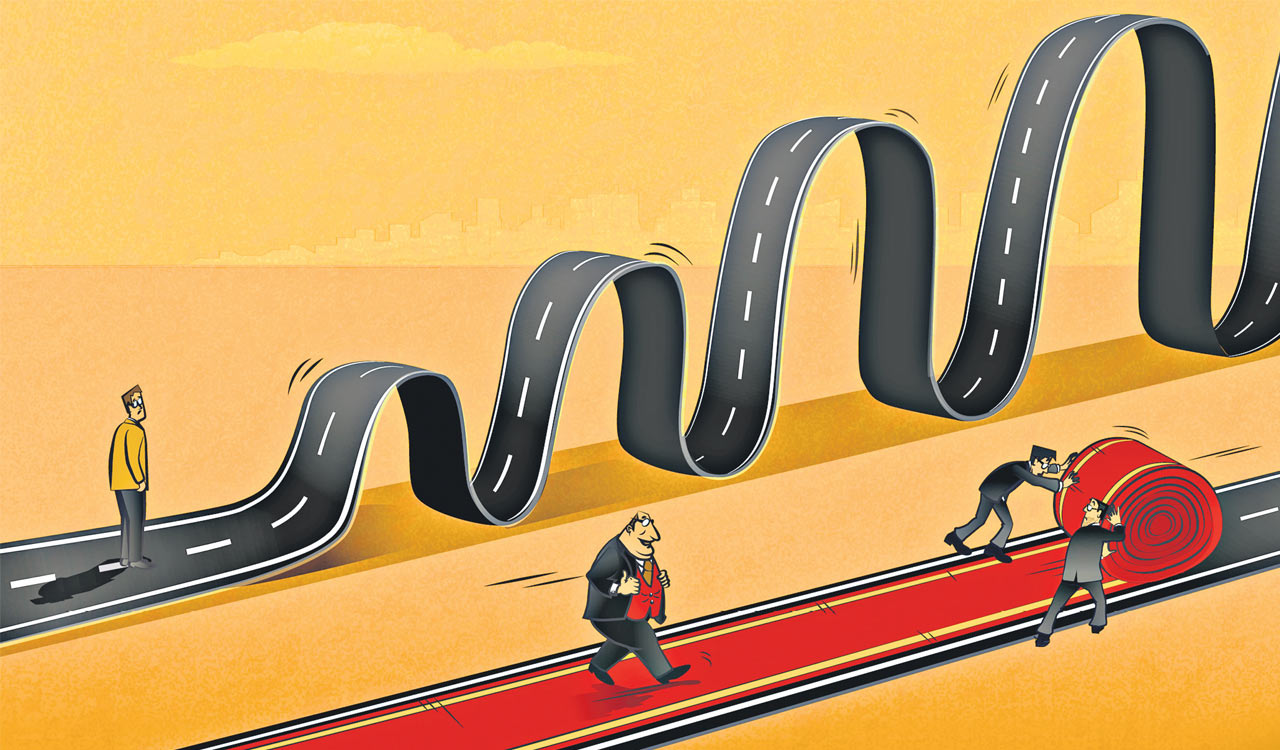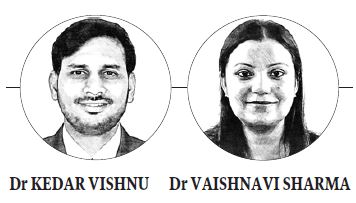Mission 2047: A reality check
Instead of relying on a one-size-fits-all national strategy, we need a vision for each State and sector

By Dr Kedar Vishnu, Dr Vaishnavi Sharma
India will complete 100 years of independence in 2047, and with this centenary, the vision of becoming a developed nation is more prominent than ever. Central to this vision is the Viksit Bharat 2047 mission, which aims to transform India into a leading global economy and improve the quality of life for all its citizens. The IMF revised India’s GDP growth forecast from 6.8% to 7% for FY2025, while the RBI projected it at 7.2% in August 2024. Growth is driven by robust private consumption, the services sector and improvements in the industrial sector — particularly construction, electricity, and gas — and slight gains in the manufacturing sector.
As per the projections by the IMF, India is on track to become the world’s third-largest economy by 2030, with a GDP of $7 trillion, and could potentially claim the top spot by 2060, reaching $35 trillion. The Finance Ministry echoes this optimism, aligning its aim to secure developed-nation status by 2047. Yet, amid these promising figures, a crucial question arises: Will this growth be inclusive, ensuring development for all?
Rising Inequality
The World Inequality Lab revealed that economic inequality in India has reached its highest level since British rule. The World Inequality report showed that the top 1% now controls over 33.1 % of the nation’s wealth and accounted for 21.7% of the income in 2022-23, raising concerns that India may be heading toward a plutocracy — a society dominated by the wealthy. The bottom 50% of people account for only 5.9% of the wealth and 13.1% of the income.
While we often rely on the GDP and per capita income as indicators of economic health, this approach only provides an average view, failing to capture the true well-being of the economy. The widening gap between the rich and the poor, with the middle class struggling to survive, is a troubling trend that must not be overlooked.
Per Capita Income
Even when viewed in isolation, the figures reveal the scale of the challenge. India’s per capita income for 2023-24 stood at $2,485, with the ambitious goal of raising it to $18,000 by 2047, alongside expanding the economy from $3.26 trillion to $30 trillion (NITI Aayog). According to revised World Bank estimates (July, 2024), a developed country must have a GNI per capita of $14,005. This means our per capita income needs to grow by at least 5.64 times.
Currently, per capita income has been growing at 4-5% over the last 10 years, and if this growth continues, we will fall short by about $4,000 in 2047 to achieve the target. We must now prioritise per capita income growth over GDP growth and aim for a minimum of 7% annual growth in per capita income to achieve our goal of becoming a developed nation.
Agriculture and Industry
Two key concerns arise: First, given the current state of two major sectors — agriculture and industry — these targets appear overly ambitious. Second, even if these figures are achieved, the question remains: Will they ensure inclusive growth, prosperity and development for all? India has witnessed a remarkable recovery after Covid-19, achieving the highest GDP growth rate in the world. However, much of this growth has been driven by the services sector, while much-needed labour-intensive sectors like agriculture and manufacturing continue to struggle.
The gross value addition from agriculture, including fishing, is projected to grow by 2% in 2024-25, a decline from the 3.7% growth achieved in FY 2023-24. GVA is a measure of economic value a sector or business adds to its goods and services, minus input costs.
India’s growth post Covid-19 has been driven by the services sector, while labour-intensive agriculture and manufacturing continue to struggle
The World Bank’s database shows that the industrial sector’s share of value added to GDP is 24.9% for 2023-24, below the global average of 26.4%. The declining contribution of the manufacturing industry, which has decreased from 18% in 1995 to 13% in 2023-24, is not a positive trend for India. Even in Q1 of FY24, the sector contributed only 14%.
Despite the government’s focus on industrial growth, expansion in this sector has lagged behind expectations. Recent initiatives like the Production Linked Incentive scheme, which targets 14 key sectors such as electronics and textiles, aim to enhance industrial capacity and attract both domestic and international manufacturers, positioning India as a potential global hub. However, job creation has remained stagnant, undermining this potential.
India’s demographic dividend is frequently highlighted — 50% of the population is under 25, representing 20% of the world’s youth, according to the United Nations Population Fund (UNFPA) Report, 2023. This vast pool of employable youth presents an enormous opportunity, but it is being jeopardised by structural challenges in key sectors.
The growth of artificial intelligence (AI) is exacerbating this problem by posing a danger to employment prospects in sectors of the economy already experiencing a dearth of new jobs. If India fails to leverage its demographic dividend and adapt to AI, it risks undermining its long-term growth potential. Hence, it would be difficult for us to achieve crucial national objectives like Sabka Saath, Sabka Vikas (Together with all, Development for all) and Atmanirbhar Bharat (Self-Reliant India).
Essential Steps for Progress
Prioritising structural reforms is essential to generating high-quality jobs and accelerating growth. Instead of relying on a one-size-fits-all national strategy, we need a tailored plan and vision for each State and sector to achieve a developed nation status. Overreliance on the services sector will not suffice to meet the target of 7% annual growth in per capita income, and this imbalance will create greater challenges in the long run. Now is the crucial moment to introduce significant reforms in both agriculture and industrial sectors.
Additionally, since 2022, the rising trade deficit in the merchandise sector poses a significant concern. India’s merchandise exports in August dropped by 9.3%, falling to $34.71 billion from $38.28 billion in the same month last year. To boost per capita income and ensure inclusive development, we must enhance the efficiency of both firms and land use across sectors. Development should benefit the economy in its entirety, not just a select few. Achieving the vision of a developed country will be challenging unless we adopt a diversified and comprehensive strategy.

(Dr Kedar Vishnu is Associate Professor at Manipal Academy of Higher Education, Bengaluru. Dr Vaishnavi Sharma is a PhD from Indira Gandhi Institute of Development Research [IGIDR], Mumbai)
Related News
-
Telangana techie loses Rs 4.15 lakh to online gold trading fraud
4 mins ago -
Hyderabad: Couple working as house help at doctor’s residence held for theft
19 mins ago -
Hyderabad auto driver foils attempt to kidnap young woman, five held
1 hour ago -
Haiti gang attack on journalists covering hospital reopening leaves 2 dead, several wounded
2 hours ago -
21 dead as Mozambique erupts in violence after election court ruling
3 hours ago -
Cartoon Today on December 25, 2024
10 hours ago -
Sandhya Theatre stampede case: Allu Arjun questioned for 3 hours by Chikkadpallly police
11 hours ago -
Telangana: TRSMA pitches for 15% school fee hike and Right to Fee Collection Act
11 hours ago




